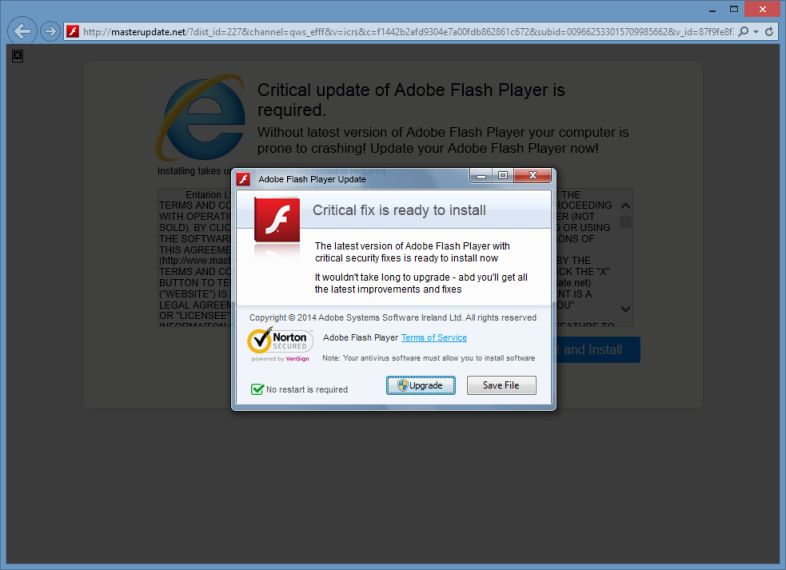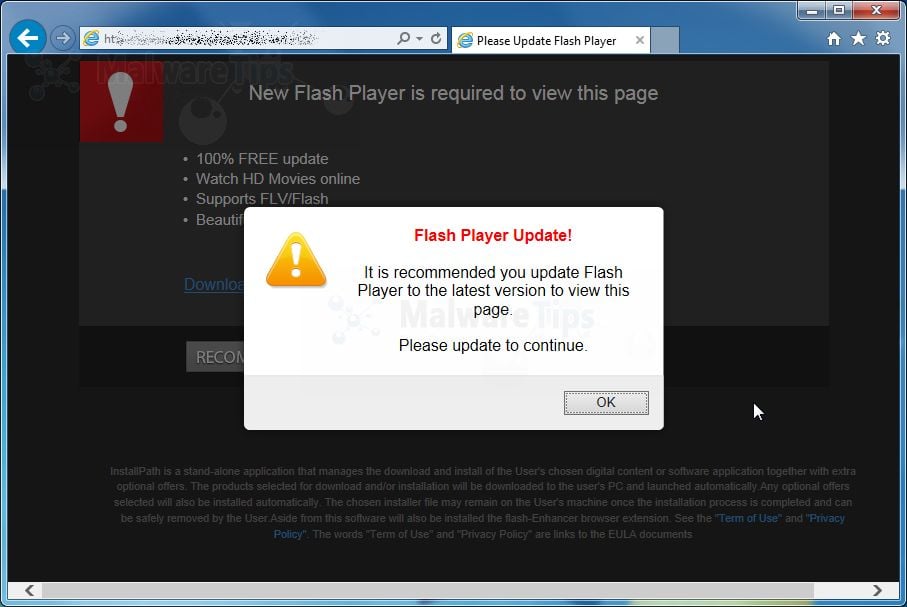
- #Adobe update malware removal how to
- #Adobe update malware removal update
- #Adobe update malware removal software
- #Adobe update malware removal plus
Screenshot of a message encouraging users to pay a ransom to decrypt their compromised data: There are no tools capable of cracking Adobe cryptography free of charge (at least not yet). The only way to retrieve locked files free of charge is to use an existing backup. Note that most cyber criminals cannot be trusted - they usually ignore victims and do not provide promised decryption tools, even if ransoms are paid. Also, Adobe ransomware developers urge their victims not to attempt to decrypt their files using third party software.Īccording to them, these actions might result in permanent data loss and increased cost of decryption. They promise to send a decryption tool as soon as payment is made (in Bitcoins). The cost of decryption is unknown, however, according to Adobes's developers, this depends on how quickly victims make contact.įurthermore, they offer free decryption of one file as a 'guarantee' that they can be trusted. To retrieve their files, users must contact cyber criminals via the email address, however, as with most ransomware developers, Adobe's developers make ransom demands. According to a ransom demand pop-up window, all files has been locked due to a 'security problem with the PC'. The "FILES ENCRYPTED.txt" text file contains a short message stating that all files have been locked (encrypted) and an email address to contact Adobe's developers. Adobe can be found and identified in Task Manager as " BulkFileChanger (32bit)".
#Adobe update malware removal plus
adobe" extension plus a unique ID and an email address.įor example, " 1.jpg" file is renamed to " and so on. Once the system is infiltrated, Adobe ransomware displays a ransom demand message (pop-up window), creates a " FILES ENCRYPTED.txt" text file, and renames each encrypted file by adding the ". adobee) extension to encrypted files originates from STOP ransomware family. Adobe's developers (cyber criminals) use it to corrupt systems by encrypting files (making them unusable).Īnother ransomware that adds. This virus belongs to the Dharma ransomware family and it was first discovered by S!Ri.
#Adobe update malware removal software
Learn about the terminology that Microsoft uses to describe software updates.Adobe is a high-risk virus that is categorized as ransomware.
#Adobe update malware removal update
This update is an optional update in Windows Server Update Service (WSUS). To get the standalone package for this update, go to the Microsoft Update Catalog website. This update is an optional update in Windows Update.
#Adobe update malware removal how to
How to obtain and install the update Windows Update To resolve this issue, reinstall the third-party version.

When this update is applied, registry settings for the third-party provided version of Adobe Flash Player may be removed. Method 2: Reinstall your Windows operating system, but do not apply this update. Method 1: Reset your device to an earlier system restore point. This feature must be explicitly enabled and a system restore point must have been created on your Windows device before you apply this update.įor more information about system restore point, see Back up and restore your PC. Note If you must use Adobe Flash Player again on your device after this update has been installed, use one of the following methods: After you apply this update, it cannot be uninstalled. This update removes Adobe Flash Player that is installed on any of the Windows operating systems that are listed in the "Applies to" section.

For more information about how to remove Adobe Flash Player, see the Uninstall Flash Player | Windows topic on the Adobe website. If you installed Adobe Flash Player manually from another source, it will not be removed.

This update only removes Adobe Flash Player that was installed by your version of Windows. For more information, see Adobe Flash end of support on December 31, 2020.Īpplying this update will remove Adobe Flash Player from your Windows device.Īfter this update has been applied, this update cannot be uninstalled. Adobe Flash Player is out of support as of December 31, 2020.


 0 kommentar(er)
0 kommentar(er)
